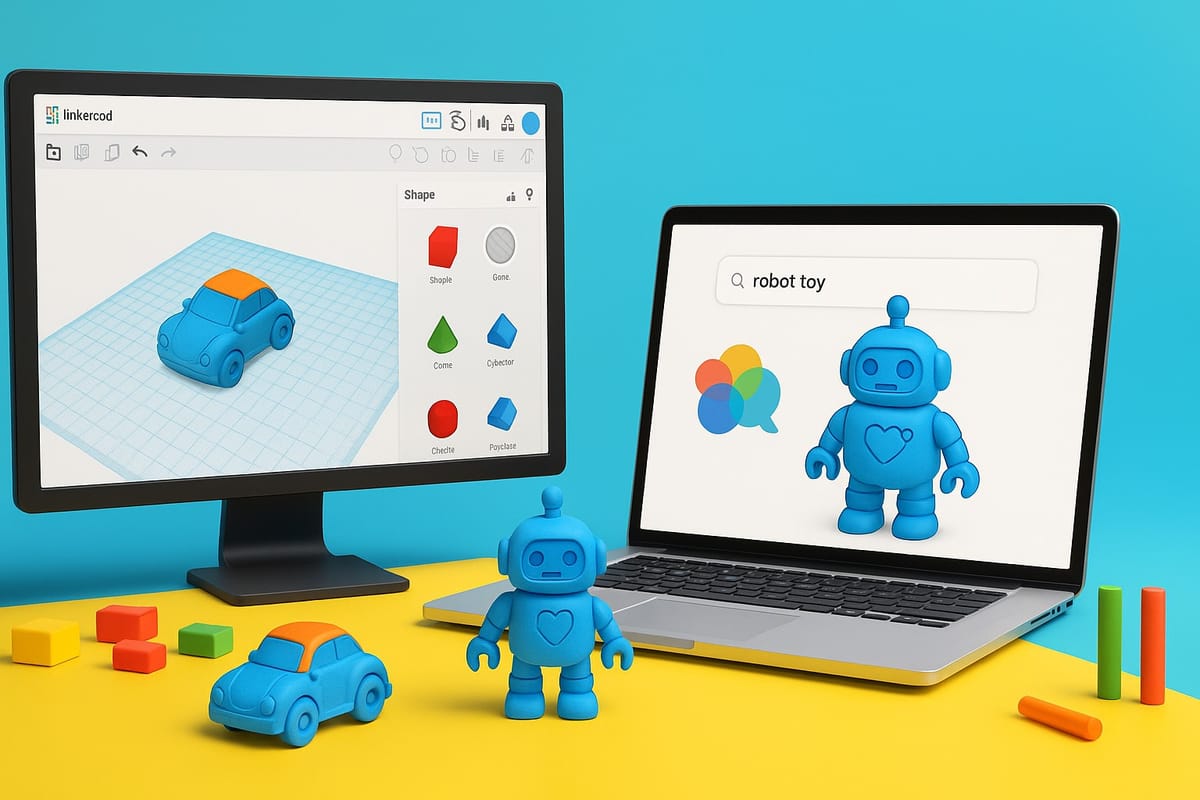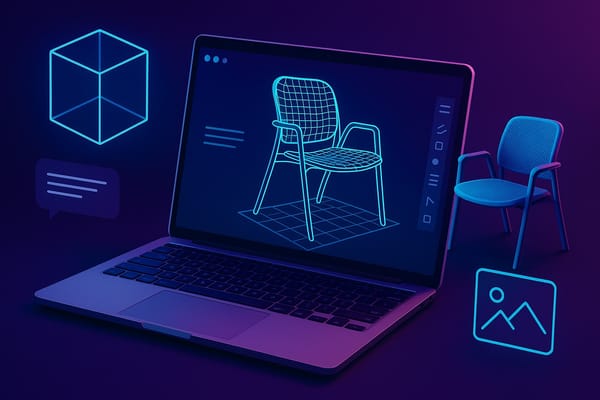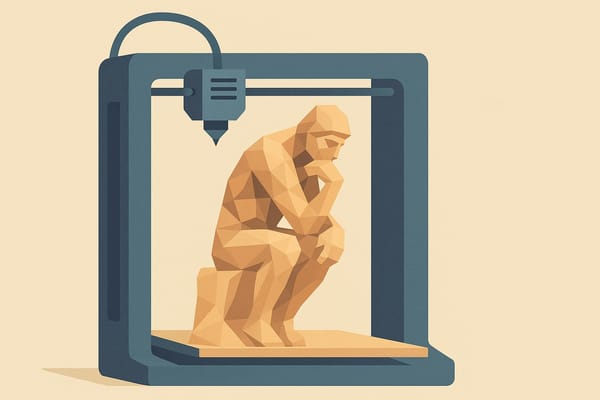Tinkercad and AI: The Future of STEM Education and Creative 3D Design

Tinkercad has become one of the most widely used platforms for beginner 3D modeling and design. Its simple interface and browser-based accessibility make it a favorite among teachers, students, and hobbyists around the world. But as AI enters the classroom and creative workflows, new opportunities are emerging to enhance the Tinkercad experience through AI STEM activities and generative 3D design tools.
If you are using Tinkercad or teaching with it, now is the perfect time to explore how AI-powered tools like PrintPal’s text-to-3D generator can support design learning and unlock creativity for all ages.
What is Tinkercad?
Tinkercad is a free, browser-based 3D design platform created by Autodesk. It is popular in education settings due to its drag-and-drop interface, low learning curve, and full compatibility with 3D printers. Users can design custom shapes, create electronic circuits, and even write simple code to power interactive models.
Tinkercad is commonly used for:
- STEM education projects
- Robotics and Arduino integrations
- Beginner 3D printing
- Game design prototypes
- Design thinking exercises
For teachers and students, it provides an engaging hands-on way to learn 3D modeling, problem-solving, and spatial reasoning.
AI STEM Activities and Tinkercad
As education moves into the AI era, schools are looking for ways to integrate artificial intelligence into science and technology lessons. This is where AI STEM activities shine.
One exciting example is combining Tinkercad projects with AI-generated 3D models. With tools like PrintPal’s AI model generator, students can describe an idea with words and instantly receive a 3D printable model. They can then remix or build on that design in Tinkercad.
Here’s how it works:
- A student enters a prompt like "keychain with initials and stars" or "phone stand shaped like a rocket"
- The AI generates a printable STL file
- The student imports it into Tinkercad
- They customize, combine, or edit the model using Tinkercad’s intuitive blocks
- The project is exported and printed
This workflow encourages rapid ideation, creative confidence, and personalized learning.
Tinkercad Generative AI: What’s Next?
While Tinkercad itself does not yet have built-in generative AI, the idea of Tinkercad generative AI is gaining traction. By pairing Tinkercad with AI tools like PrintPal, educators and designers can simulate a next-generation experience where AI helps scaffold learning and accelerate design exploration.
For example:
- Students can generate base parts like brackets, containers, or wearable accessories using AI
- Then remix and decorate them in Tinkercad with their own logos, holes, or design features
- This enables a smooth transition from abstract ideas to concrete models
It also supports project-based learning and encourages digital literacy around artificial intelligence.
Who Should Use AI Tools with Tinkercad?
- Teachers looking to create more dynamic, individualized lessons
- Students who want to push their design skills or generate functional objects
- Makers and hobbyists interested in automating the boring parts of modeling
- Clubs and camps that need fast-paced creativity for time-limited STEM programs
Best of all, both Tinkercad and PrintPal are browser-based and beginner-friendly. No installations, no expensive licenses, and no steep learning curves.
Start Your AI-Enhanced Tinkercad Project
If you are ready to try AI STEM activities or simply want to experiment with text-to-3D generation, visit PrintPal.io. Enter a short description, download your file, and import it into Tinkercad to start designing.
Whether you are running a classroom, workshop, or just learning for fun, this is the easiest way to combine AI and 3D design in a meaningful way.





